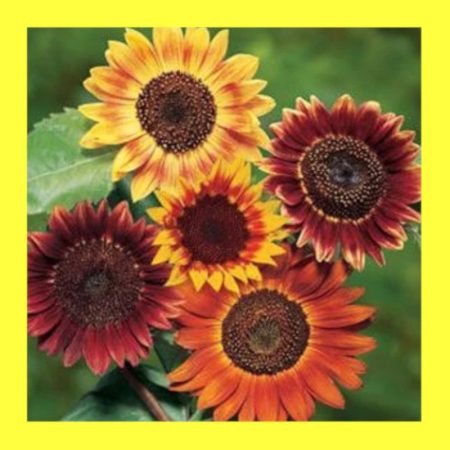CHILLI-SMALL THAI-BIRDS EYE
CHILLI-SMALL THAI-BIRDS EYE
A$3.60
Availability: 56 in stock
Capsicum annuum
CHILLI-SMALL THAI-BIRDS EYE known as the Thai chilli pepper, is a small but very hot chilli pepper that is commonly used in Southeast Asian cuisine. It is a member of the Capsicum annuum species, which also includes other popular chilli peppers such as Jalapeno, Serrano, and Poblano.
This plant produces large numbers of green fruits that mature to blazing red color with heat & flavor to match! In food, of course, it is the spicy flavor that you will identify even if you cannot find the chilies. Plants are compact, about 30cm tall, & perfect for containers. Great ornamental value. The colorful peppers last a long time on the plant. Sow in seed boxes or punnets. Transplant when at the 2-4 leaf stage.

How to Grow Small Thai-Birds Eye Chilli
- Small Thai Bird’s Eye pepper plants prefer warm, sunny locations with well-draining soil. Make sure the location you choose has at least 6 hours of direct sunlight per day.
- Start seeds indoors 6-8 weeks before the last frost date in your area. If the weather is warm enough outside you can direct sow seeds. Otherwise sow the seeds in seed trays or pots filled with seed compost. Then cover with a plastic wrap or propagator lid to maintain humidity.
- Transplant seedlings outside once the seedlings have grown to about 7-10cm tall and have at least two sets of true leaves. They can be transplanted into larger pots or directly into the garden.
- Water regularly to maintain moisture but do not overwater. Water the plants when the soil is dry to the touch and fertilise them every 2-3 weeks with a balanced fertiliser.
- Provide support if you Chili peppers decides to grow beyond its usual size. Generally they grow as a bush plant, however, they can get tall and heavy with fruit. Stake them for support when necessary as they grow.
- Keep Pest and Disease in check for issues such as aphids, whiteflies and spider mites, and diseases such as powdery mildew and blight. Use organic pest control methods if possible.
- Harvest when the Small Thai Bird’s Eye peppers are ready at about 75-90 days after transplanting, depending on the variety. The peppers will change colour from green to red when they are fully ripe.
Heritage of Small Thai Birds Eye Chilli
Thai Birds Eye Chilli, also known as Prik Kee Noo (in Thailand), is native to Southeast Asia and commonly used in Thai, Vietnamese, and other Southeast Asian cuisines. It is believed the chilli was introduced to Thailand by Portuguese traders during the 16th century. Now cultivated in many parts of the world it is a popular ingredient in various dishes and sauces. The larger seeded variety of Thai Birds Eye Chilli (Capsicum frutescens) is used more often in salads whereas the small Thai Birds Eye Chilli is used in curried, stir fries and soups adding a spicy kick to thrill the pallet.
SHOP Garden Supplements
Category Colour Guide
Planting Guide for Australia
Scoville Heat Units (SHU)
50,000 - 100,000
Plant Height
100 - 120
Season of Interest
warm to hot
Temperature Range
25 - 35
Determine / Indeterminate
Annual / Perennial / Biennial
Perenial
Frost Hardy / Tender
Tender
Full Sun / Part Sun / Shade
Full sun
Sow Direct / Raise Seedlings
Either
Soil
Sandy Loam, Rich in nutrients. added compost to the soil for fertility, and dolomite or crushed egg shells to help fend off blossom end rot
pH
6 - 7
Soil Temperature
27 - 30°C (81 - 86°F)
Seed Preparation
Soak seeds overnight in lukewarm water or freeze for a few days before planting
Sowing Depth
4
Plant Spacing
80 - 100
Row spacing
100 - 120
Watering
regular, keep moist not wet
Germination Time (Days)
7 - 21
Harvest Time (Days)
70 - 100
Good Companion Plants
carrots, cucumber, squash, members of the Allum family, Basil, Dill, Fennel, Marigold, Nasturtium, Cilantro, Beans, Tomatoes
Bad Companion Plants
Brassicas, cabbage, broccoli, Cauliflower, etc.), Fennel, Potato
Pests
Aphids, Thrips, Whiteflies, Spider Mites
Diseases
Bacterial spot, Anthracnose, Phytophthora blight, Verticillium wilt, Root rot, Powdery mildew
More About Us
When I started this journey in 2009, I found nothing existed commercially, that was reasonably priced and easy to use. There was a homemade system which I also found was not that user-friendly.
Then a friend of mine told me about a homemade method she used. However, when I tried her method, I found this also didn’t suit my needs, as it too had flaws that I considered where important. It did not keep vermin out, did not have a lockable lid and (to me) looked unsightly in the garden















